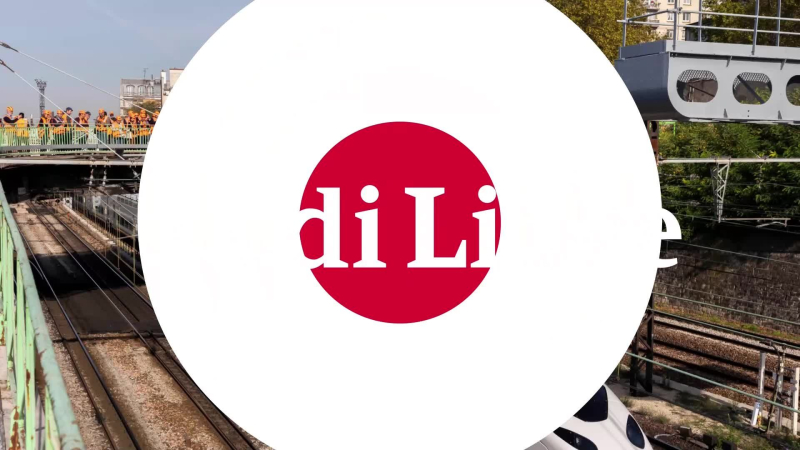TGV: “M”, the letter which intends to revolutionize French high speed and respond to the lack of seats

Eight years after the start of the project, the final version was presented Monday morning at Alstom in Belfort, where the power cars are manufactured and where the trainsets are assembled before their delivery. First commercial trip in 2025.
He has been crisscrossing France for two years, discreetly, probably at night, between two convoys, sometimes at 320 km/h. 50 000 km covered by the five trainsets in tests "dynamic, describes Alain Krakovitch, the boss of TGV-Intercités, at SNCF . They make it possible to test the entire operation of the train", the last stage of qualification, before certification in September. But this Monday morning, the latest addition to the line of French high-speed trains, Avelia Horizon in the range of the manufacturer Alstom, "M" for the SNCF, came out in full light of the ;rsquo;factory where he is born.
Long tapered, more aerodynamic, adorned with a black ellipse that it shares with its elders, elegant and almost immaculate whiteness, the "M" claims a simple aesthetic, "clear, refined. The orange livery of the first TGV symbolized technical prowess and performance, evokes Christophe Fanichet, director of SNCF Voyageurs, paying tribute to its designer who died a few days ago, Jacques Cooper. This will seek a better harmony between the train and the landscape." The pale gray siding undulating on its sides will offer " a wave effect when it moves. Those of a river which weaves" in its environment, continues Florence Rousseau, marketing director of the TGV M project.
Alstom started everything from scratch
The reference is not accidental, it "M" that the director of Alstom France, Jean-Baptiste Eymeoud, like the bosses of the railway company describe as "revolutionary", wants to be more virtuous. 20% more energy efficient than its contemporaries, almost entirely recyclable, it will have "the lowest C02 emissions of all of our trains, per kilometer& quot;, points out Christophe Fanichet, while the train slowly leaves an anonymous hangar, at the side of the track, in Belfort. It is there that they are assembled, in this historic industrial site, 150 years old, founded when it retreated from Alsace lost during the War of 70. There, from eight factories, the elements that compose them converge, the engines coming from Tarbes and the electrical subassemblies from Toulouse, to cite Occitanie. Their 2 500 employees contributed to this reinvented machine.
"It’is the most innovative trainset since the first series", describes Alain Krakovitch. The SNCF wanted more sobriety, more space on board, a unit rate and lower maintenance costs, more "agility" for the operation of its future trains, connectivity to anticipate their maintenance. "The specifications were such that it forced us to question a certain number of things, continues Jean-Baptiste Eymeoud.Instead of making an incremental evolution, as before, we put everything back together." This is not without consequences.
If the SNCF obtains what it wanted, 20% additional places on board, the ability to adjust between first and second class or even to slide seven to ten cars according to its needs between the two engines, she had to be patient, accepting some delays in development. Hoping for the Paris Olympic Games, the first of the 115 units that it has ordered (3.5 billion euros of investment) will not be delivered until the beginning of 2025, for entry into service < em>"which we plan for the second half of 2025, says Christophe Fanichet. We are impatiently waiting for these trains, we absolutely need them" to cope "traffic growth and competition". The SNCF is currently short of trains.
“What will change is the place”
This TGV M will be deployed on the LGV Sud-Est. Towards Montpellier also ?
Yes, it will gradually move all the way to the southeast. The calendar will evolve depending on the trains we have, but yes. We will receive four trains next year, in 2026 nine more and after that, twelve trains per year.
What is his major quality, from your point of view?
What will change is the place. What is quite fantastic about this train is that we will have 20% more space with a train of the same length. Additional places for customers but also more space per customer, so that will allow us to do new things: we will have the number of firsts and seconds that we want, a bar or not, bike spaces that we never had. The story does not end when the train leaves the factory, we can make it evolve according to markets and customers.
Will this be a solution to the shortage of tickets that travelers are facing?
Today, the TGV with the highest capacity has 560 seats, this TGV M will be able to accommodate up to 720 seats. We have an extremely significant potential for additional seats and I am very confident about the fact that when we have 115 trains, and it will not stop at 115, we already know, that will allow more trains to run with more travelers on board and therefore, at a given moment, with lower prices.
I subscribe to read more




